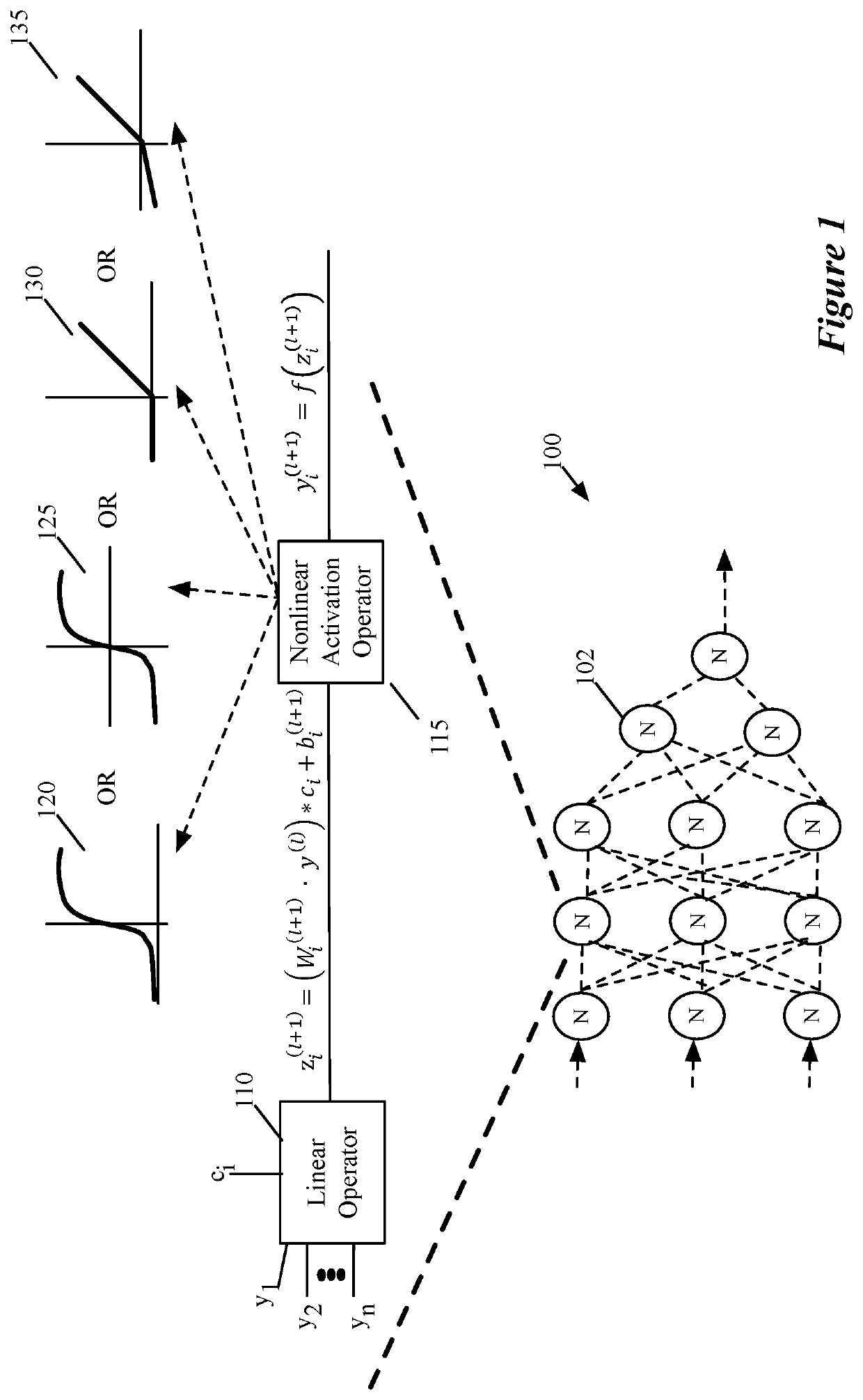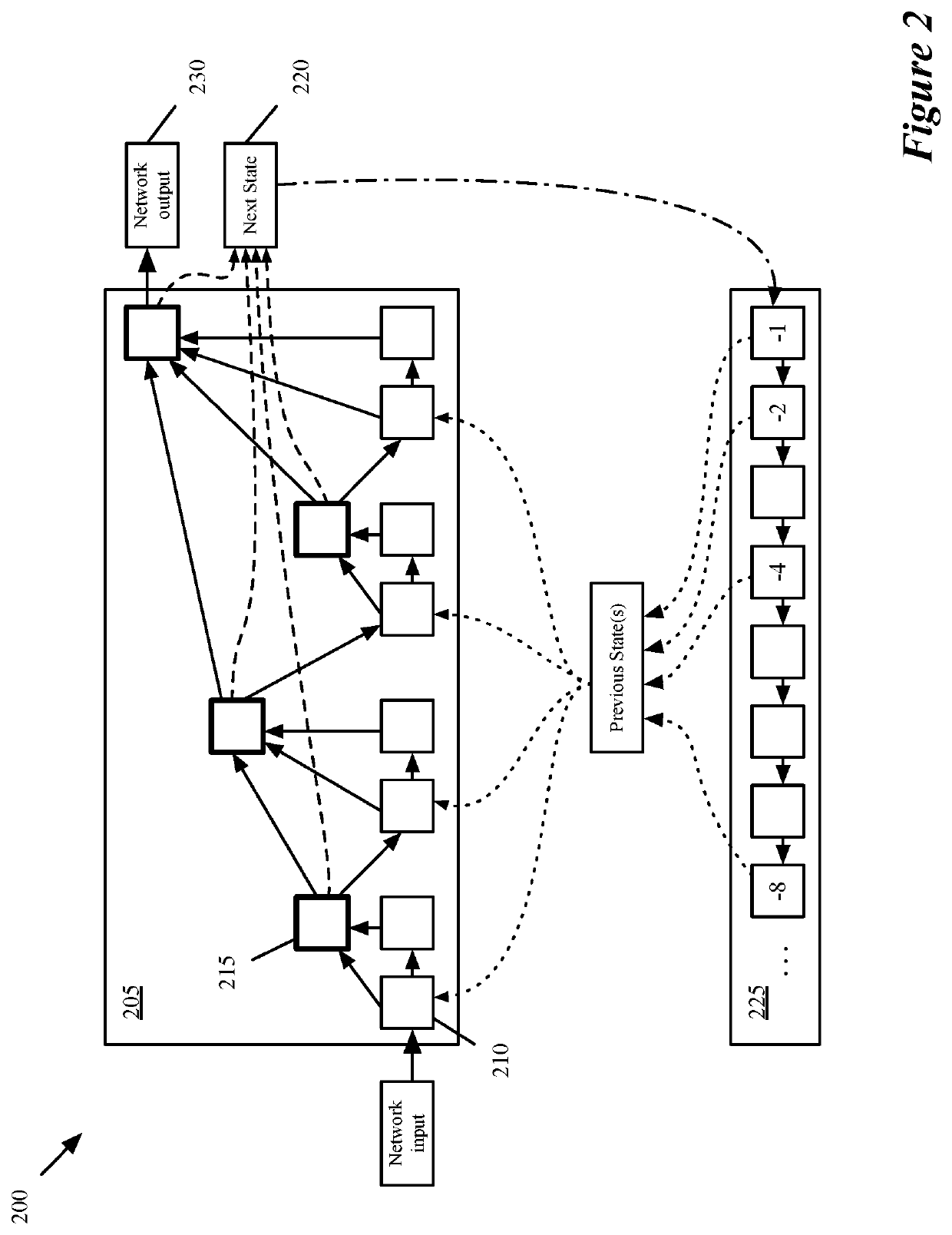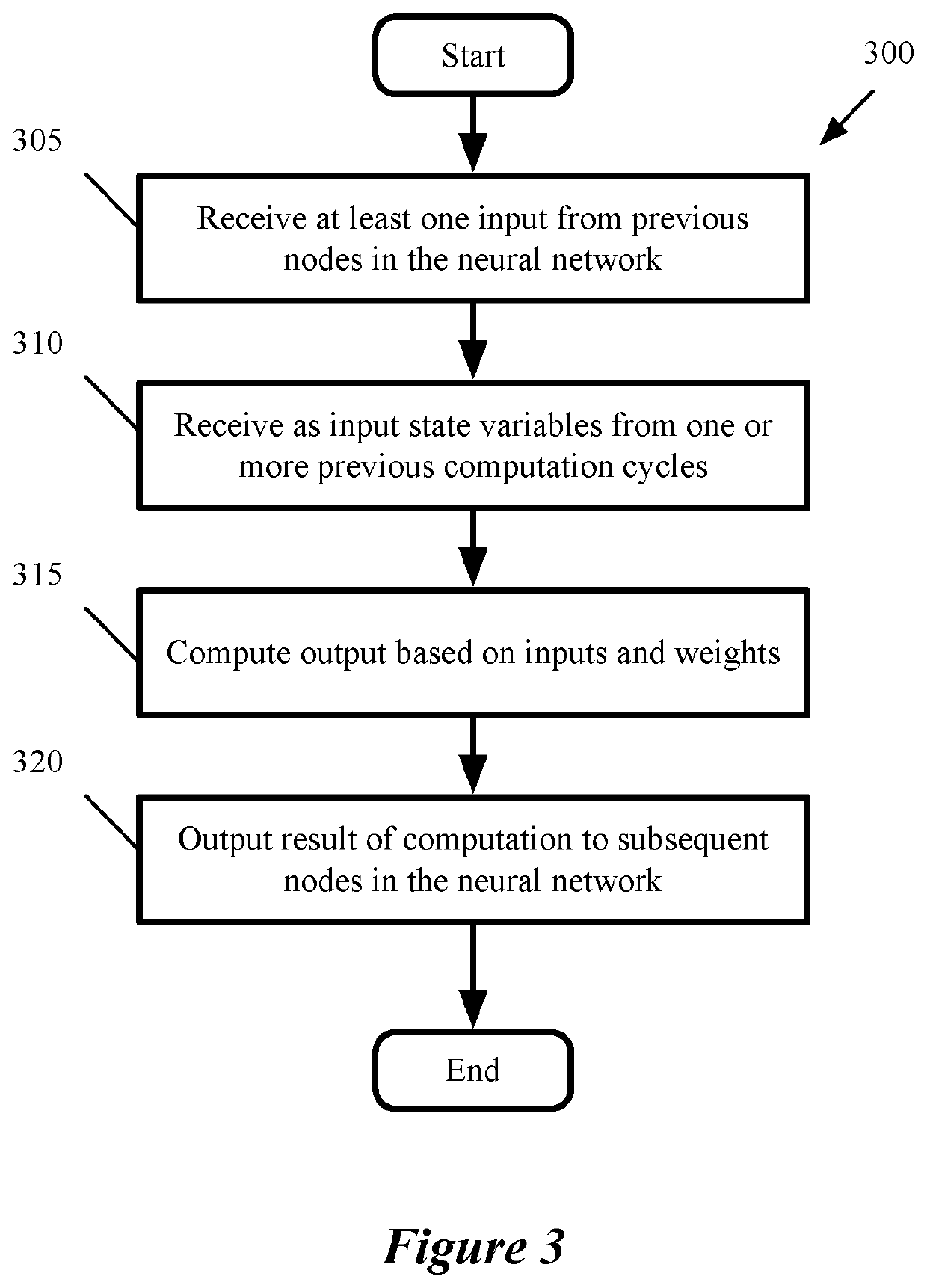Video denoising using neural networks with spatial and temporal features
a neural network and feature technology, applied in the field of video denoising using neural networks with spatial and temporal features, can solve the problems of not being able to effectively propagate information across different temporal feature scales, machine learning techniques are not well suited to many real-world applications, etc., and achieve the effect of improving video and reducing nois
- Summary
- Abstract
- Description
- Claims
- Application Information
AI Technical Summary
Benefits of technology
Problems solved by technology
Method used
Image
Examples
Embodiment Construction
[0030]Some embodiments of the invention provide a recurrent neural network architecture for implementing spatial and temporal residual edges in machine-trained neural networks. The recurrent neural network architecture of some embodiments uses a deep learnable next state transition function to propagate information across different temporal feature scales. The resulting stateful networks are recurrent networks with spatiotemporal residual edges, here referred to as spatiotemporal residual recurrent networks (SRRNs), and which can be used for many types of machine-learning applications that are currently stateless.
[0031]The SRRNs of some embodiments excel in real-world applications because they capture a concept that is fundamental to our world: objects, processes, and events have spatial and temporal scope. Perceiving objects, processes, and events in the real world requires recognizing patterns that have both spatial and temporal qualities. Recurrent networks such as Recurrent Neur...
PUM
 Login to View More
Login to View More Abstract
Description
Claims
Application Information
 Login to View More
Login to View More - R&D
- Intellectual Property
- Life Sciences
- Materials
- Tech Scout
- Unparalleled Data Quality
- Higher Quality Content
- 60% Fewer Hallucinations
Browse by: Latest US Patents, China's latest patents, Technical Efficacy Thesaurus, Application Domain, Technology Topic, Popular Technical Reports.
© 2025 PatSnap. All rights reserved.Legal|Privacy policy|Modern Slavery Act Transparency Statement|Sitemap|About US| Contact US: help@patsnap.com



